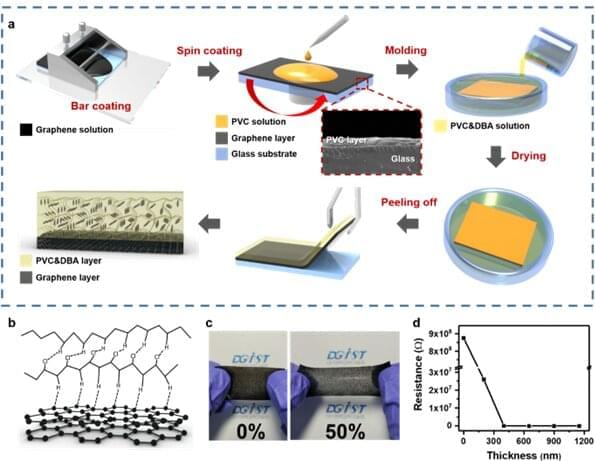Professor Juhyuk Lee of the Department of Energy Engineering has developed an elastic triboelectric generator that can be used in the daily lives of frequent movers. The cause of the output reduction of the elastic triboelectric sensor was identified during joint research with Professor Joohun Lee of Hanyang University’s (ERICA campus) Department of Bio-Nanotechnology. Additionally, the professor used graphene to develop a touch sensor with stable output and expand the application of the triboelectric generator. The study is published in the journal Nano Energy.
Along with the rapid growth of various biosensors and wearable devices due to the continuous development of semiconductors and small electronic components, there has been a growing interest in triboelectric generators for use as sensors or energy sources. To use the triboelectric generator in a wearable device, the material that comes into contact with the body must be safe, and the output must be constant despite any deformations caused by movement.
However, the output of conventional elastic triboelectric generators is affected by its change in form. The reason for this relationship was not clearly understood. Similar to previously existing products, there are limitations to precise detection if the output changes along with the change in form, such as stretching.









Comments are closed.